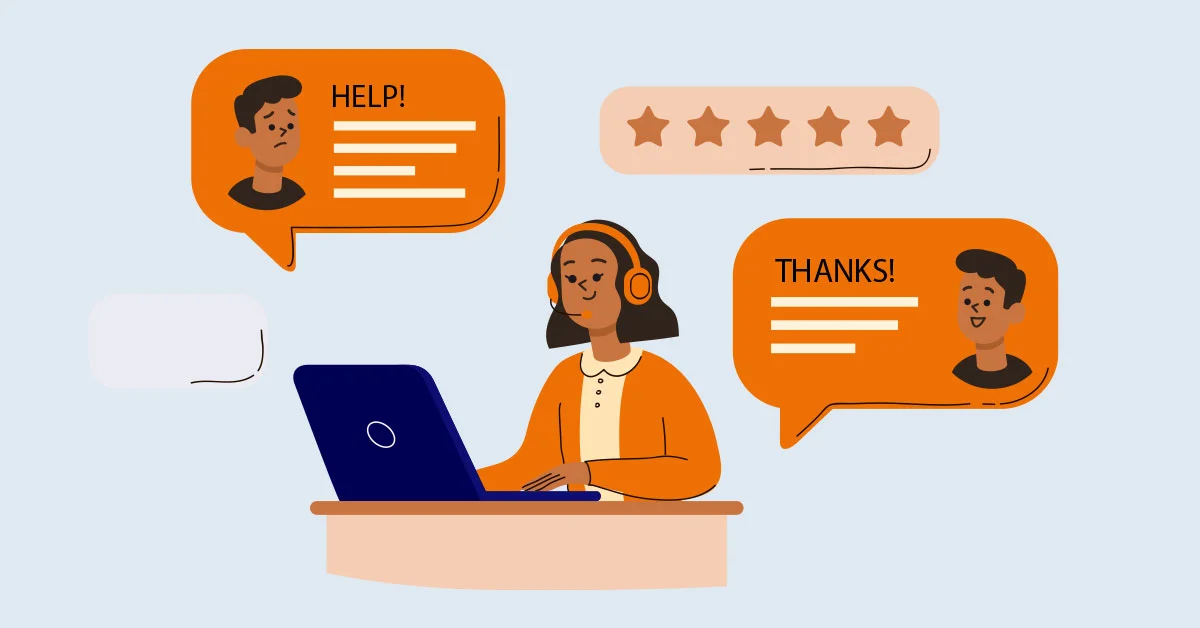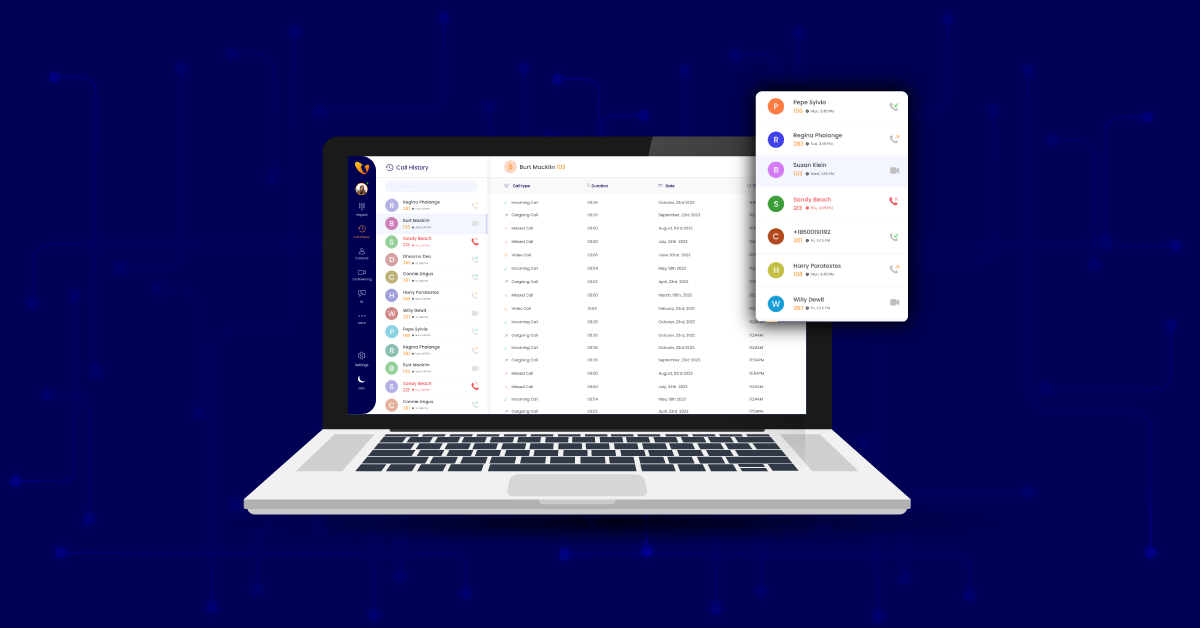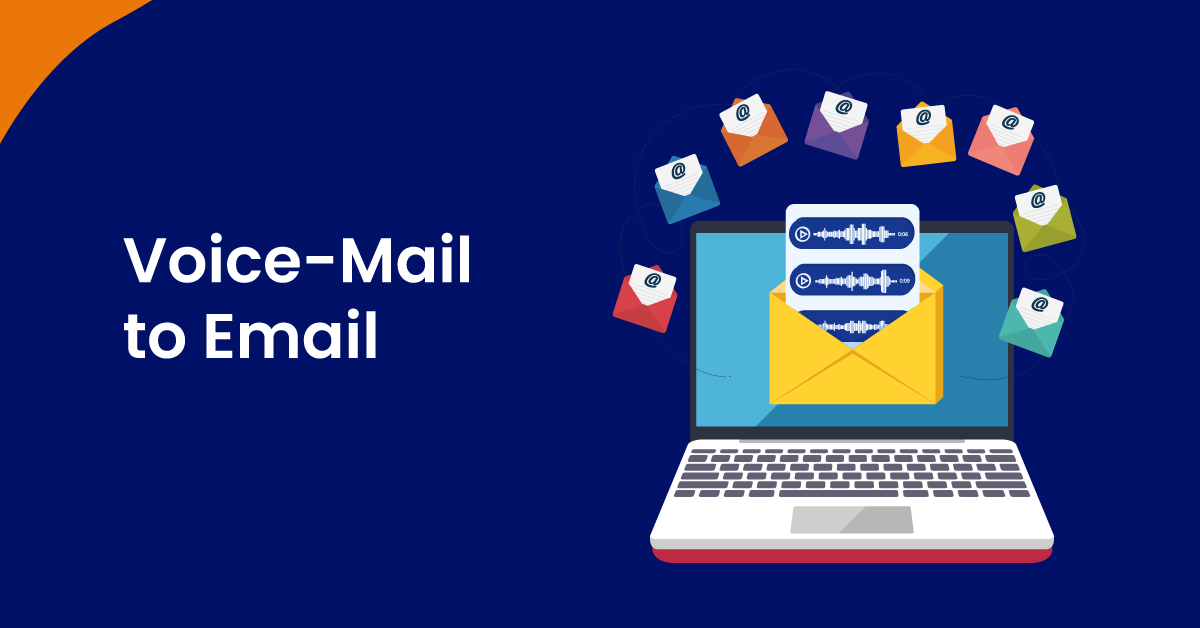Table of Contents
A call flow serves as a guide for agents, outlining the sequential steps and prompts that dictate the course of a conversation. It systematically instructs agents on what actions to take, how to perform them, what statements to make, and which questions to pose. It functions as a structured formula dictating how agents should navigate calls from the initial contact center management to resolution.
When employed at a business fielding a high volume of daily phone calls, it becomes imperative to implement a strategic approach for inbound calls.
This strategy significantly influences the overall customer experience and, depending on call volumes, can also shape the employee experience.
Adding to the complexity, the nature of these calls varies widely, totalizing customer support inquiries and prospective customers looking for information about your products or services.
Understanding the Call Flow and its Importance
It refers to a customized and company-designing pathway that outlines how incoming calls are managed and distributed. It automates various phone call stages, from the initial greeting to post-call documentation. When implemented effectively, it contributes to a consistent customer experience, expedites issue resolution, and efficiently distributes customer service calls to the most suitable agents.
Primarily utilized in contact centers, it enhances the management of inbound calls by automating call routing, reducing hold times, and ensuring optimal agent availability. Some businesses also employ outbound call paths incorporating features such as voicemail drops, pre-recorded scripts, and automated post-call management.
Functioning of Call Flow
Understanding and effectively working with call handling protocol is essential for ensuring a smooth and efficient handling of inbound and outbound calls in a business setting. Here’s a comprehensive guide on how to navigate and optimize call pathways.
Familiarize Yourself with the Call Flow Structure
Begin by thoroughly understanding the call pathway structure specific to your organization. Identify key components, decision points, and a call’s overall path from initiation to resolution.
Master the IVR System
Their identity is confirmed once after their greetings/wishes recognize the caller. Interactive Voice Response system engages with pre-recorded prompts to ascertain the purpose of the call and gather essential customer details required for effective call routing.
Upon the caller’s response, conveyed either through dial pad touch tones or speech. This system employs Automatic Call Distribution (ACD) to initiate the call-handling protocol process. This process encompasses various possibilities, such as connecting the caller directly to a suitable agent.
Transferring them to a designated call queue, presenting self-service options, forwarding the call to an external phone number, directing it to a specific ring group, disconnecting the call, or redirecting it to voicemail. This versatile approach ensures a dynamic and efficient call routing experience for the caller based on their specific needs and responses.
- Regularly update call pathways
- Put Omni channel Customer Support into Practice
- Include CRM Software
- Make Use of Analytics
Call Routing Protocols
Understand how calls are routed within the organization. This includes knowledge of automatic call distribution (ACD) systems, skills-based routing, and other protocols to direct calls to the most suitable agents or departments.
Utilize CRM and Customer Information
If integrated, leverage customer relationship management (CRM) systems and available customer information during the call. This enhances personalization and enables a more efficient handling of customer inquiries or issues.
Efficient Call Resolution
Focus on swift and effective call resolution. Understand the procedures for escalating calls when necessary and ensure that customers are connected to the right resources or personnel to address their needs.
Continuous Training and Updates
Stay informed about any changes or updates to the call pathway processes. Continuous training ensures that you are well-equipped to handle new scenarios or features introduced to the call-handling protocol system.
How Can We Improve Our Call Flow?
To enhance call handling protocol, consider implementing several key strategies. Upgrade to an intelligent interactive VoIP phone system with Natural Language Processing for a more intuitive interaction. Personalize routing based on customer data and employ skills-based routing to connect callers with the most suitable agents.
Enhance self-service options within the interactive voice response and integrate multiple communication channels for a seamless experience. Provide ongoing training for agents to empower them with the necessary skills for efficient call handling.
Regularly review and analyze the current call handling protocol, gathering feedback to identify and address pain points.
Varieties of Call Flow Structures
There are several types, and each has its role in organizing and guiding communication inside an organization. Interactive voice response (IVR) systems automate interactions, whereas sequential call pathways take a straight line. Calls are sent to specializing agents using skills-based routing, and conditional call flows change according to predetermined standards.
While queue-based call flows oversee waiting lines, outbound call pathways involve calls made by the company. Call flows that are blended combine incoming and outgoing calls. Whereas call flows that are transfer and escalation call handling protocols specify how calls are transferred between agents or escalated when necessary.
The call pathway type used by the business VoIP provider is determined by its communication goals and customer contact requirements. Here are some common types.
- Sequential
- Interactive Voice Response (IVR)
- Skills-Based Routing
- Conditional
- Outbound
- Queue-Based
- Blended
Steps to Develop an Effective Call Flow
Every call-handling protocol has a sequence of steps ranging from simple to complex. A thorough comprehension of each step’s role in the overall process is crucial, allowing for adding layers or eliminating friction to enhance the flow.
Simplify the Process
Although the backend structure of your call pathway may appear intricate, it is imperative to provide callers with a straightforward experience. Ensure clarity and simplicity in your interactive voice response options, eliminating overlap between menu choices.
It should be evident that selecting option 1 leads to a direct transfer to a specific department or addresses a particular issue.
Incorporate Comforting Messages
Have you ever found yourself waiting on hold, unsure if the call is still connected? Implementing comfort messages is a best practice in contact centers. It is preferable to slightly overuse these messages rather than underuse them, ensuring that customers are always aware of their status.
Particularly beneficial during periods of unplanned queues or unexpectedly high call volumes, comfort messages provide reassurance to callers. Assuring them that their requests are acknowledged and efforts are being made to address them.
Prioritize Efficiency
With call handling protocol, the possibilities are vast, including various options, queues, and messages. However, it’s essential to avoid getting carried away. The foremost objective should be to streamline the caller’s journey, minimizing the steps required to achieve desired outcomes.
The customer typically prefers the path of least resistance. When configuring call handling protocol, conduct trial runs with team members to gauge their experience in reaching different departments, ensuring a user-friendly and efficient process.
Utilize Virtual Numbers
Utilizing the Dialed Number Identification Service (DNIS) in your call center enables tailored experiences for different callers within the same queue, including varied music on hold and wait times. The Interactive Voice Response identifies when a caller has dialed a virtual number with specific treatment, prioritizing them by moving them to the front of the queue.
Upon receiving an incoming call, agents can be presented with messages like “VIP” or “Urgent” to ensure they know the caller’s use of a virtual number.
Virtual numbers prove beneficial in several scenarios:
- Customers are approaching the end of their contract.
- Customers select “Cancel service” on the IVR.
- VIP customers who opt for premium, expedited service.
- Customers are responding to advertising, and directing calls to a sales team.
- Escalations when support tickets reach critical circumstances.
Emphasize Escalation
Highlighting the importance of escalation is integral to creating an effective call-handling protocol. Ensure that your call pathway design includes a well-defined process for escalating issues when needed.
This could involve routing calls to higher-tier support, management, or specialized teams, ensuring a prompt and appropriate resolution for complex or critical issues. Emphasizing escalation in your call-handling protocol helps address challenges efficiently, enhancing overall customer satisfaction and issue resolution.
Minimize Hold Times
Reducing hold times is key to crafting an effective call-handling protocol. Prioritize the design to minimize the duration callers spend on hold, ensuring a swift and efficient resolution to their inquiries.
Implement strategies such as intelligent routing, self-service options, and streamlined agent workflows to keep hold times to a minimum, contributing to a positive customer experience and increased satisfaction.
Regularly Update the System
Continuous system updates are essential for maintaining an effective call pathway. Regularly review and refresh your call pathway to align with evolving customer needs, product or service changes, and emerging communication technology trends.
This proactive approach ensures the system remains relevant and optimized, contributing to a seamless customer experience. Regular updates also enable the integration of new features, enhancing overall efficiency and responsiveness within the call pathway.
Conclusion
In conclusion, a call handling protocol is the organized series of events and exchanges that lead a caller through a communication system, usually in a call center or customer service setting. Creating a call pathway that works requires a calculated approach to improve both operational and customer satisfaction.
Understanding the customer experience, putting in place simple and clear IVR options. Using technologies like virtual numbers, stressing escalation procedures, cutting down on hold times, and routinely updating the system to accommodate evolving requirements are crucial elements in this process.
Businesses may establish a call-handling protocol that is more customer-focused and efficient by combining these components, which will increase customer satisfaction and speed up issue resolution.




